
Lamp Shades: How to measure lampshades for a perfect fit
Search
See also our main lamp shade article for more lamp shade topics.
Measurements for a lamp shade
It's fairly easy to measure a lamp shade. You'll need a tape measure or a ruler. If it turns out that the measurements you're trying to make are too long for a ruler, try using a piece of string, wool, cotton thread, or some other long straight object to measure the distance. You can then measure the length of that item separately.
Lamp shade measurements are always performed in inches in the USA. While you can round up or down, it's better to be accurate where possible. Although a half inch won't make a noticeable difference.
Whereas most products are measured using width, height and depth, lamp shades are a little different. Some lampshade are a cylinder shape, which would work well. But other shades, such as empire shades and bell shades, have sloped sides.
Taking the slope into account

If we were to measure the "height" of the shade in a straight line, vertically aligned, straight up and down from top to bottom, it would give us a height. But it wouldn't accurately represent the actual "length" of the side of the shade.
A shade with a sloped side such as an empire shade actually has a longer side than a drum shade of the same vertical height. This is because the side is on a diagonal. If you recall from trigonometry, the hypotenuse of a triangle (the diagonal) is usually longer than the right-angle dimensions.
When measuring for a lamp shade, the height is always measured on the slant, ie at whatever angle the side of the shade is. This could be straight up and down as in the case of a drum shade, or it could be on a slant as in an empire shade.
Either way we call this the "slant height". It's still a straight line from the top rim of the lampshade to the bottom rim, on the outside of the shade. But it allows the distance to be at any angle instead of purely vertical. It may be better to think of the slant height as the "length" of the side.
This better represents the shape of the shade itself, how much material may be involved, and the true sense of size in terms of how it appears when you look at it.
Measuring round or square shades

When you look down at the lamp shade from above, or up from below, you will see a profile of its main shape. Typically most lamp shade are round, so you'll see circles at the top and bottom. But some shades are rectangular, oval, square or other shapes.
Provided that the width of the shade is the same as its depth, ie the distance horizontally across from left to right is the same as the distance from front to back, you can use a simpler measuring method.
This is true for round (circular) shades, and also for square shades. It is not true for rectangular or oval shades, which need extra measurements because the width and depth are different.
The width across the top (top diameter)
For a round or square shade, measure first the distance across the top of the shade. You should measure in a straight line from the outside edge on one side, across the center/middle of the shade, to the outside edge on the opposite side.
Make sure that your measurement is passing through the center of the shade otherwise the distance will be wrong. It's preferable to measure straight across from left to right, or from from to back, parallel or perpendicular to the horizontal axis. If you were to measure a square shade in a kind of diagonal line or from corner to corner you'll get the wrong measurement.
This first measurement is what we call the "top" measurement. For a round or square shade this is a single number in inches. It tells you the width of the shade at the top, and is the same as the general diameter.
The width across the bottom (bottom diameter)
For a round or square shade you can do the same across the bottom as you did with the top measurement. Measure straight across the bottom of the shade from the outside edge on one side, directly through the center/middle of the shade, to the outside edge on the opposite side.
Again you should make sure this measurement goes through the center of the shade otherwise the measurement will be wrong. And if it's a square shade, be sure to measure either totally parallel to the left-right x-axis, or totally perpendicular ie front-to-back. Do not measure corner to corner or on a diagonal.
This second measurement we call the "bottom" measurement. For a round or square shade this is a single number in inches. It tells you the width of the shade at the bottom, which is the same as its diameter.
The slant height on a diagonal (top to bottom length)
Measuring the slant height is a little more tricky. Some lamp shades may have vertical sides, straight up and down, such as a drum or cylinder shade. Others may have sloped sides on a diagonal such as with an empire or bell shade.
When the side of the shade is sloped, it means the top diameter is smaller than the bottom diameter. This produces a diagonal from the top edge to the bottom edge.
In the case of a bell shade, the top of the shade is smaller than the bottom. However, the side of the shade is not in a straight line. The edges of the lamp shade are not flat, but curved.
The bell shade's material swoops down from the top more vertically and then flares out more horizontally near the bottom. If you were to measure directly against the surface, following the contour of the shade, the measurement will be wrong.
Instead, you want to measure in a straight line "as the crow flies", even if the sides of the shade are curved. Start your measuring device at the outside edge of the top rim of the lamp shade.
Then measure in a firmly straight line, on a diagonal (or straight down if a drum/cylinder), directly to the bottom outside edge of the shade. Ignore any curve in the shade surface. Make sure you are measuring on the outside of the lamp shade, not the inside.
This measurement in a straight line from the top to the bottom on the outside of the shade, is called the "slant height". It's the third necessary measurement for measuring lamp shades.
Note that it doesn't matter whether the lampshade is a cylinder, drum, empire, coolie, a floor shade, a mini chandelier shade, or any other type. The slant height is always measured in the same way. This should give you a single third number in inches.
You should now have the top diameter (width), the bottom diameter (width), and the slant height (diagonal).
Extra dimensions for oval and rectangular shades

Sometimes the width of a lamp shade when measured from left to right, is larger than the depth when measured front to back. When you look down at the lamp shade from above or up from below, you'll see for example an oval shape or a rectangle, instead of a circle or square.
When the width and depth are two different numbers, you will need two additional measurements to properly describe it. You therefore need both the width and the depth of the top opening, and the width and the depth of the bottom opening.
For a rectangular shade this is somewhat more obvious. For an oval shade, be sure to orient the shade straight-on so that you are measuring the very longest distance as the horizontal width, and the shorter distance across as the depth. The lamp shade should be wider than it is front to back.
For oval shades, imagine you are working with a rectangle and measure in a similar way, aligned to the axis at 90 degrees.

The depth from front to back across the top
For an oval or rectangular shade, follow the instructions earlier for measuring the top width, bottom width, and slant height. But you'll also need two other measurement including the depth across the top and bottom.
Your first top measurement should be the widest possible width across the top of the shade. For rectangular shades this would be in parallel to the longest side. For oval shades you need to measure through the middle of the lampshade the longest possible distance at the widest part of the shade.
The second top measurement should be "perpendicular", ie 90 degrees to the first measurement. You should typically measure from the front outside edge to the back outside edge in a straight line through the center/middle of the lamp shade. This forms the second top measurement, the "top depth", in inches.
You should now have two measurements, the widest part of the top and the narrowest part of the top.
The depth from font to back across the bottom
In a similar manner to measuring the top of the rectangular or oval shade, you now need to measure the bottom. You should already have the widest possible horizontal width across the bottom of the shade, through the middle/center of the lamp shade. This is the first bottom measurement.
For rectangular shades this is easier because it's the length of the longest side. For oval shades make sure to measure the widest possible distance between the left and right edges.
The second measurement you'll want is the depth from front to back across the bottom. Again this should pass straight through the middle/center of the lamp shade.
This measurement is perpendicular, ie at 90 degrees, to the first measurement direction. For rectangular shades this is the length of the shortest side. For oval shades be careful to try to measure front-to-back at 90 degrees to the left-to-right measurement.
You should then have two bottom measurements, the maximum length (widest width) and the minimum length (depth front to back). Both are in inches.
Collect your measurements together
For round and square shades you should now have three measurements: top width (diameter), bottom width (diameter) and slant height (diagonal).
For oval or rectangular shades should have two additional measurements, five in total. Including the top width, the top depth front to back, the bottom width, the bottom depth front to back, and the slant height (diagonal).
With these measurements you should be able to find and identify the correct lamp shade to purchase.
What size do you need if you only have the lamp base?
If you only have the lamp base or fixture and have no idea what size lamp shade to buy, read on. We'll go over how you can estimate what size would look good and how it's measured.
Measuring for a replacement table lamp shade
The table lamp base can give you clues as to the size of lamp shade that would look best with it. You don't want a shade that's too big, or the wrong kind of proportion or shape, otherwise it will look strange.
Clue 1: The lamp base height

The first clue is that you can strike a balance between the height of the lamp base - not including the stem or socket, and the width of the shade. For example if you measure the vertical height of the base not including the lighting hardware, ie the decorative part only, this is a good estimate of what the width of the bottom of the lamp shade should be.
Most table lamps will work with a bottom shade width of 16" or less. Larger table lamps might need a larger shade than this, but most average table lamps are at around a 16" bottom diameter. If your lamp base is especially slim and tall, ie narrow, you might prefer bringing in the width of the shade also. Buffet lamps look better with taller narrower lamp shades.
As a general rule, to figure out what height the shade should be - in terms of the up-and-down vertical height and NOT the slant height, the proportion should be about 3/4 of the width.
So if for example the lamp shade bottom width is 16 inches, the height should be about three quarters of that. 16 * 0.75 = 12. Remember that shade heights are usually measured on the slant though.
As you move from a drum/cylinder shade to an empire/bell shade with sloped sides for example, the perceived "vertical height" will flatten even if the sides of the shade on the slant remain the same length.
Measuring for a replacement floor lamp shade

Floor lamps can be a little harder to estimate the lamp shade for, because their height is very tall and it can vary. Some floor lamp bases are much taller than others, anywhere from 4 to 7 or 8 feet.
For the lamp to look like it has good proportions, generally speaking the lamp shades for floor lamps should be a little larger than for table lamps. It's common to see a lamp shade with an 18" bottom width used with a floor lamp.
Consider also that because floor lamps are larger, a flatter empire or coolie shade may in general not suite the taller proportions. The lamp may look better balanced with a drum or cylinder shade, or a "floor lamp shade".
A floor shade is a hybrid with a slightly sloped side, somewhere between a drum shade and an empire shade. The slight slope is pleasant while maintaining more of a vertical look to complement the tall stature of the lamp.
As a general rule, measure the height of the lamp base - the decorative part, up to below the lighting hardware/socket neck. Divide this by 3. This is roughly the width of the bottom of the lamp shade, ie about one third the base height.
For the vertical height of the shade, you can try between 1/3 and 1/4 the height of the base. For example if the base is 56" high, a shade that's about 18" width and 14" height may work.
If in doubt, construct a "drum" ie cylinder from sheets of paper stuck together and see how it looks when held on top of the lamp base. If it doesn't look like a balanced proportion, try resizing it.
Measuring for mini chandelier lamp shades

There isn't a lot that can go wrong when using a mini chandelier shade. Most chandelier shades are roughly around the same size, in the 5-7" diameter range. If you have a large chandelier, for example with 9 or more lights, you might opt for shades at the higher end of the scale. For smaller 3-6 light chandeliers you might prefer something closer to the lower end.
Since these shades are small, there isn't a lot of variation in their dimensions. You could also order a single shade or a variety to test how they look. Candelabra lamp shades are large enough to clip onto the light bulbs and are large enough to cover the bulb area. Dealing in a range of 1-2 inches of difference isn't likely to have significant impact.
Measuring for a pendant light

To estimate what size lamp shade you need for a pendant depends largely on the size of the area you want to light up. All things being equal, a larger drum pendant for example probably has much the same hardware and internal structure as one designed for a smaller shade. So long as the fitter is correct in how it will attach to the light fixture, your options for sizing are fairly open.
One thing to consider though is that a majority of pendant lights often feature a wider flatter drum shade. This gives a broader, more relaxed and modern look. A very tall cylindrical shade or a bell shade might not look appropriate and may take up too much headroom above your furniture.
A wider drum shade will help to spread the light out over a larger area. For this look, aim to have the height be between 1/2 and 1/3rd the shade width.
10-16" diameter will give you a fairly small drum pendant.
17-24" diameter will give you a fairly regular medium-sized pendant
24-36" diameter will be a fairly large pendant.
Adjusting the vertical position of a lamp shade

One of the benefits of lamp shades is that it covers up some of the unsightly parts of the lamp. For example the lamp neck, the socket, the light bulb, any mounting hardware such as a harp etc will be hidden by the shade.
You ideally want the lamp shade to be tall enough so that, when mounted, the lower edge will come down below the socket and hide it from view. It's okay for some of the neck to be visible but it's preferable to hide the socket and any switches or other components.
Then you also want the top of the shade to be high enough so that it covers the light bulb and any other mounting hardware such as a harp fitter.
You don't really want to be able to see the light bulb when sitting alongside the lamp for example, because one of the functions of the lamp shade is to diffuse the light and reduce glare. While the height of the shade itself should be considered, the vertical position of the shade on the lamp is also important.
Lamp shade drop

Lamp shades attach to a lamp via some kind of fitter, which may look like a large washer or a ring with rods attached to it. This will attach below the bulb or be screwed on above the bulb
In general the shade will probably be designed by default so that when it is attached to the lamp base it will be vertically centered around the light bulb and cover the lighting hardware.
But you might find in some cases, especially with taller lamp shades such as cylinder shades, that the height needs to be adjusted. In the case of an uno fitter this is much more difficult because the fitter has to attach to the lamp base below the socket/bulb and the fitter itself is part of the shade. So its height cannot change. But in the case of a spider fitter, which sits on top of the harp, this can be adjustable.
Another aspect of lamp shades to consider is that there is usually at least a small vertical distance between the top of the shade and where the fitter meets the lamp harp. This distance is called "the drop".
Lamp shade drop is a measurement in inches of how far the fitter extends downard. In the case of an uno fitter, this distance is significant because it must drop down below the bulb. In the case of a spider fitter the distance is often only 1/2 to 1". But if you have a taller cylinder shade it may feature a drop of up to several inches.
This drop is an attempt to keep the lamp shade vertically centered around the light bulb, so that when attached to an "average" lamp base it will be in the correct position.
If the cylinder shade only had a small drop, it would be placed too low on the lamp. Keep this in mind when considering how much height is needed above the bulb in order to properly position the shade.
Harp fitters

A harp is a metal device with a saddle that sits below the light bulb. Two prongs of metal rods rise up around the bulb and meet at the top where they join together. This is topped with a post which has a screw thread on it
Lamp shades which have a spider fitter are designed to sit on top of this post, secured into position with a lamp finial which has a screw thread inside of it.
The harp itself comes in different sizes for different heights. A taller lamp harp will rise up higher and form a platform for the shade to sit on which is higher up. Note that this will move the shade upwards, which may risk exposing the bulb socket to view below the bottom edge of the shade.
If the shade is sitting too low and looks like it isn't positioned well vertically for a balanced look, you may need a taller lamp harp. Harps are available in several sizes based on their height.
Shade risers

Lamp shade harps are fairly inexpensive if you need to buy a new one. But as an alternative you can keep your old harp and simply "extend" its height using what's called a lamp shade riser.
The shade riser is a small rod which extends the screw-threaded post on top of the lamp harp. It can "rise up" the lamp shade by an inch or more, and you can use more than one.
Do you have a lampshade but not a lamp base?
If you own a lamp shade and want to turn it into a lamp, but don't actually have a base for it, you can follow many of the steps above in reverse.
For example if you're using it for a table lamp, the width of the bottom of the shade should be roughly the same as the height of the lamp base - the decorative part of the base, up to where the neck and lighting hardware begins.
Similarly for a floor lamp, where the shade width is often about 1/3rd or so the height of the base, multiply the width by 3 to estimate a floor lamp base height. For example an 18" wide lamp shade may look appropriate on a base which is 18 x 3 = about 56 inches height.
Remember that the size of a lamp or light fixture should be roughly in proportion to the size of the room it's in. If you have very small lamps in a large room they will look even smaller. As the room size increases, the lamp sizes should ideally increase also.
If your lamp shade is not large enough to look appropriate in a large room, you may be better off starting from scratch with a new lamp, or choosing another shade.
Continue reading about lamp shades
Using lamp shades with light fixtures
How to attach a lamp shade to a lamp
How to measure lamp shades for a perfect fit
Matching a lamp shade to your lamp base
Lamp shade materials colors textures and patterns
Light bulb heat and lamp electrical safety tips
How to clean and repair lamp shades
How to create a custom DIY lamp shade
Explore Topics

Table of Contents
Lamp Shades: How to measure lampshades for a perfect fitMeasurements for a lamp shadeMeasuring round or square shadesExtra dimensions for oval and rectangular shadesWhat size do you need if you only have the lamp base?Adjusting the vertical position of a lamp shadeDo you have a lampshade but not a lamp base?Continue reading about lamp shadesCommentsShopping Ideas
Trending
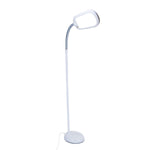


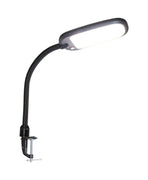

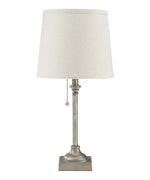

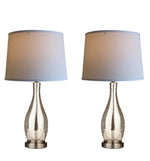

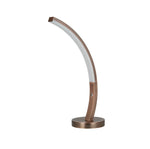








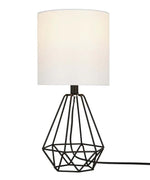












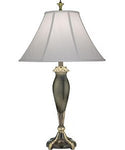

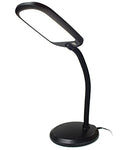



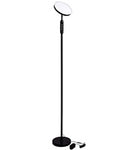

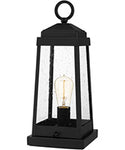
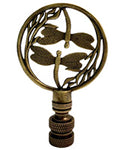
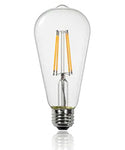
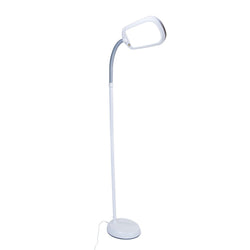

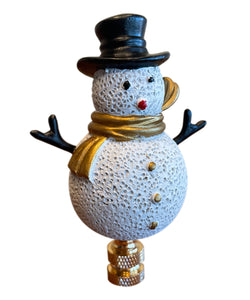
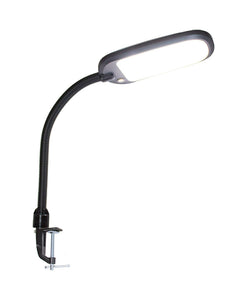


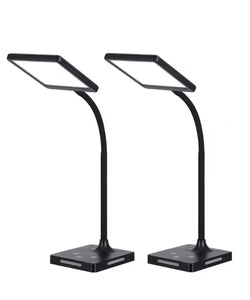

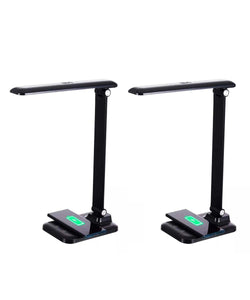

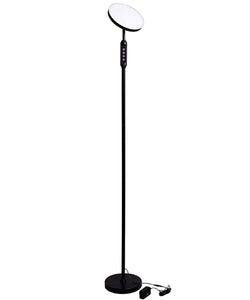
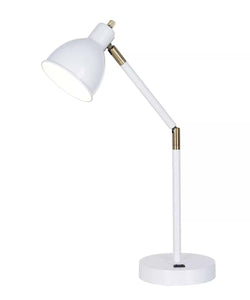
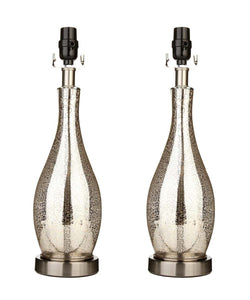

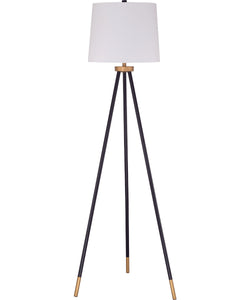
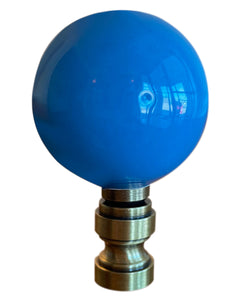

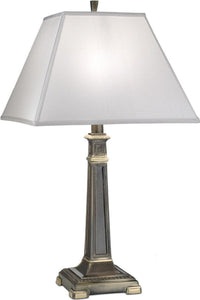
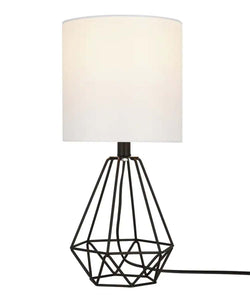
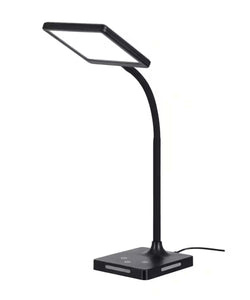
Comments